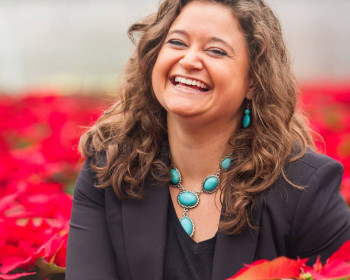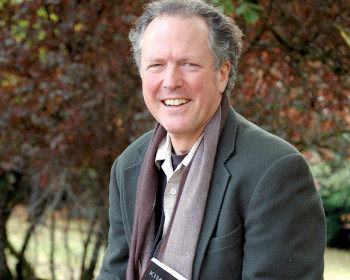Professor Kerl-McClain brings creativity to counseling
Open gallery

Stella Kerl-McClain is an associate professor at Lewis & Clark and a professional counselor who serves as the current president of the Association for Creativity in Counseling (ACC). She was a founding board member of the ACC along with colleagues at Texas State University at San Marcos. The organization publishes quarterly issues of the Journal of Creativity in Mental Health to explore creative, relational therapies. Here, Kerl-McClain explains the vision and growth of her unique enterprise.
Why did you foresee a need for the Association for Creativity in Counseling? What client needs were going unfulfilled in traditional therapy?
It started as the vision of my friend and ACC’s founding president, Thelma Duffey. We were working with a play therapist and that person had very prescribed ways of working with play. We needed a place for people who don’t define themselves specifically as play therapists, or in any one expressive arts category. Thelma enlisted everyone around her at Texas State in San Marcos. I’ve been on the board ever since, and later we started a website and a journal.
How has the association grown? What level of participation do you see now?
We had this huge attendance and interest at Texas State, and we gathered enough members to start a new division of the American Counseling Association (ACA) right away. Currently, it ranges between 800 to 1100 members. You have to be an ACA member to participate, because the ACC is a specialized interest division of the ACA. We chose to be part of the ACA because our ethics come from their identity of professional counselors.
When does a creative strategy best communicate with the client?
True creativity emerges in the moment. You stay very connected to the client. You know where to go, but how you get there depends on the client and what emerges. You can use creative techniques any time talk isn’t the best way to get where you’re going. Maybe a client uses metaphor, so in that case, you’d use her metaphors for parts of her life. I love Sandtray—it’s an approach where you have a small sandbox, and you use figures to create the client’s world in the sand. The figures are kind of nondescript and can represent people or events in the client’s life.
I love to take therapy out of the therapy room. My favorite thing is to go outside. I’ve even climbed a tree with a client.
What response have you received from students and the counseling community at Lewis & Clark?
Students love it. We have really creative students–I think creative people are drawn to Lewis & Clark. I’ve had students do a collage with their clients, had students do guided imagery and a lot of other creative techniques.
What counseling work has translated to your teaching methods?
I identify as a counselor and a counselor educator. I don’t really see myself as an academic. I connect with the class as you would with clients. It’s a lot like therapy, just with a teaching goal. I use a lot of creative techniques in teaching. In my counseling theories class, I sometimes come to class dressed as a theory. I’ve also had students do this exercise: for one of the theories, they come to class in an outfit that captures the theory. Then we do a fashion show where they explain how the outfit represents the theory.
How does creativity emphasize relationships or make counseling more of a dialogue? Do you prefer a specific art form or technique?
I like anything outside and I love Sandtray, but it really just depends on the client. For example, I used drawing a lot when I worked with teenagers. I would help them to create images that represent different parts of the self. You can also use books, movies, and songs to represent the different parts of the self, or different time periods of the person’s life.
What insights have you uncovered about how your students and clients form relationships through creative processes?
You need the relationship first in any process. My students and I look for ways we can connect with clients through empathy and dialogue. Through the dialogue, something creative can emerge. This is not as much of an approach as a way to work with a myriad of issues that are out there. It’s part of the journey that we take with our clients.
Graduate Communications is located in room 205 of Rogers Hall on the Graduate Campus.
voice 503-768-6054
fax 503-768-6053
Graduate Communications
Lewis & Clark
615 S. Palatine Hill Road
Portland OR 97219

